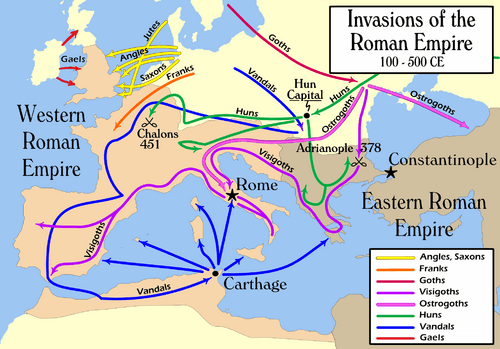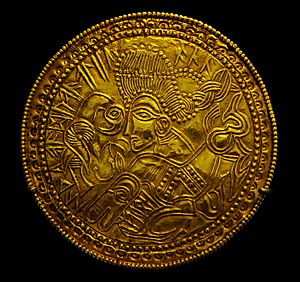Migration period facts for kids
The migration period, or barbarian invasions or Völkerwanderung, is a name for the period of roughly AD 300–700 in Europe. That was the period at the end of Ancient history and the beginning of the Middle Ages.

Contents
Migrations

The migration included the Goths, Vandals, and Franks, among other Germanic, Bulgar and Slavic tribes. The migration may have been influenced by attacks of the Huns in the east and connected to the Turkic migration in Central Asia, population pressures, or climate changes. The migration period also included groups of Angles, Saxons, Frisians and some Jutes to Britain.
Migrations would continue well beyond 1000 AD, successive waves of Slavs, Alans, Avars, Bulgars, Hungarians, Pechenegs, Cumans, and Tatars changed the ethnic makeup of Eastern Europe. Western European historians, however, tend to stress the migrations most relevant to Western Europe.
Related pages
Images for kids
-
Migration of early Slavs in Europe between the 5th–10th centuries.
-
Migration and settlement of the Bulgars during the 6th–7th centuries AD
-
Slavic fibula brooch made of copper dating back to the Migration Period, c. 600-650 AD
See also
 In Spanish: Período de las grandes migraciones para niños
In Spanish: Período de las grandes migraciones para niños




